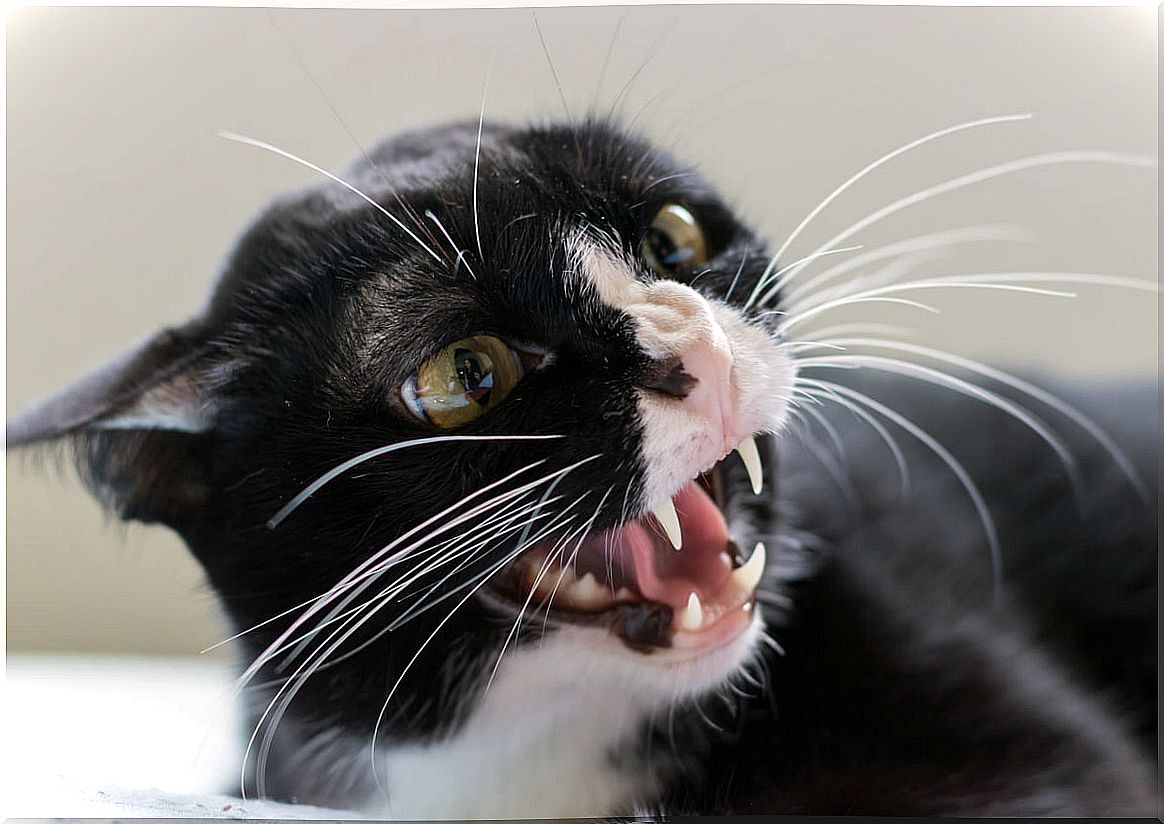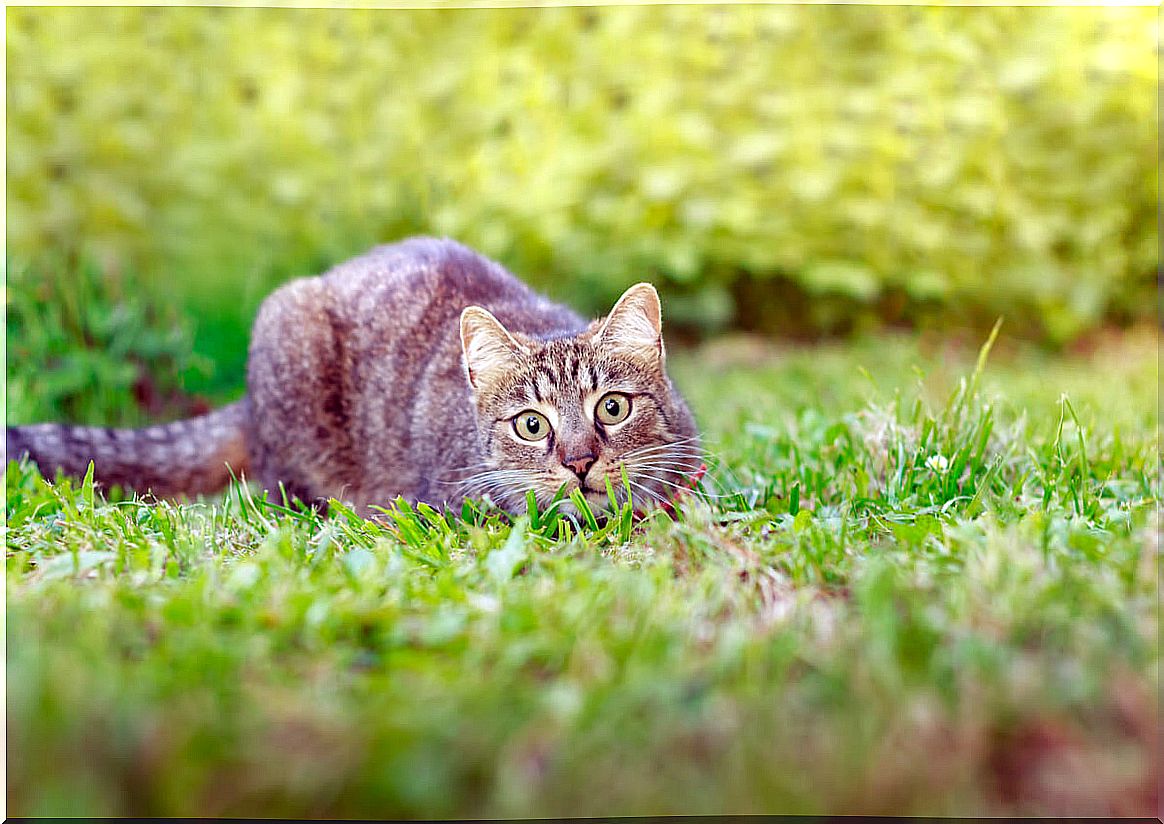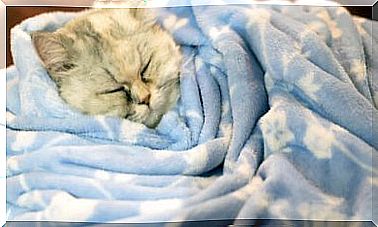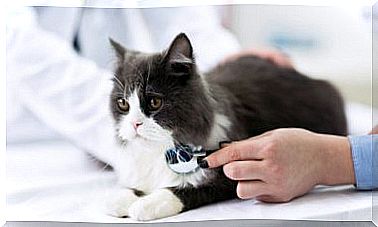What Is Redirected Aggressiveness In Cats?

Redirected aggressiveness in cats is defined as a violent sequence on the part of the feline associated with an increase in excitement, which takes place when the animal is not able to access the stimulus that is causing this sensation. Unable to channel his energy into the element itself, he redirects it in the form of an attack towards the guardians.
It is one of the most dangerous forms of feline aggression for people, as the attacks can be violent and unpredictable. Still, if the trigger for this behavior is found out and effectively eliminated, the animal’s recovery prognosis may be favorable.
On feline aggressiveness
Several studies show that redirected aggressiveness in cats is the second most frequent cause of consultations in the field of clinical ethology, only surpassed by the known problems of inadequate fecal elimination. Still, this conflictive behavior is not the only one that can occur in cats.
This source cited and other professional portals provide some interesting data regarding feline behavior: 65% of the attacks occur between cats, while the remaining 35% are directed towards people. Of this last percentage, almost 80% of the injuries are experienced by family members who share space with the feline.
Aggression in cats can be divided into two different blocks. These are the following:
- Defensive in nature: the cat expresses fear with outstretched limbs, arched back, and upright U-shaped tail. There is also a generalized piloerection (“hairs on end”), dilated pupils, and ears folded back.
- Offensive nature: in this case, the feline shows confidence. This is expressed posturally with an upright body, direct eye contact, and raised, upturned ears.
As we can see, violence in felines can come from insecurity and fear or from the need for dominance and social positioning. We must not forget that aggressiveness in predators such as cats is an adaptive behavior, and therefore, in a certain way natural.

What is redirected aggressiveness in cats?
Once we have dissected the generalities of violent behavior in felines, it is time to focus on redirected aggression. As we have already said, it is a wrong channeling of energy and excitement by the cat.
It differs from the rest of aggressive responses in a relatively simple way, since this variant is not preceded by piloerection or the physical postures explained previously. Instead, the cat takes a hunting stance before attacking its guardian.
This attack has a simple basis: the cat does not have at its disposal the stimulus that is generating an accumulation of energy, so it releases it with the closest mobile entity present, that is, the tutor. Some of these stimuli can be the following:
- Presence of another cat in the home, even if it is not in the attacking feline’s field of vision.
- The presence of unknown persons in the same room with the animal.
- Loud noises such as ringing or ringing tones.
- Transfer of the animal to a new environment.
We must limit that redirected aggressiveness must be differentiated from organic violent behaviors. These last attacks on guardians occur when the animal is injured or suffers from some type of internal pathology (arthritis or urinary tract injuries, for example). Of course, in these cases the animal is expressing its annoyance in the only way it knows how.
What is your treatment?
First of all, thorough diagnosis is the key to success. The veterinarian will have to perform a thorough medical examination of the animal, as it is likely that the cat’s irascible behavior comes from a disease, which would rule out a case of redirected aggression.
If this behavioral maladjustment is confirmed, the disease can be dealt with in various ways, but always under the supervision of a professional ethologist. Some of the general measures to follow are the following:
- Providing environmental enrichment at home, so that the feline can channel its energy effectively throughout the day.
- Identifying the negative stimulus that causes discomfort in the animal and completely eliminating it from its environment.
- In severe cases, occasional use of anxiolytic drugs or application of relaxing pheromones in the animal’s environment.
Of course, the key is to accurately identify the stimulus that causes the sudden accumulation of energy in the feline. That is why this pathology has a reserved prognosis, as it is not a simple task at all.

Finally, it is necessary to emphasize that a pet is a joy in the house, but also a moral obligation for the guardian. In case things go wrong, putting up for adoption or abandonment are reprehensible behaviors. You should always turn to a specialist before making any decision.









